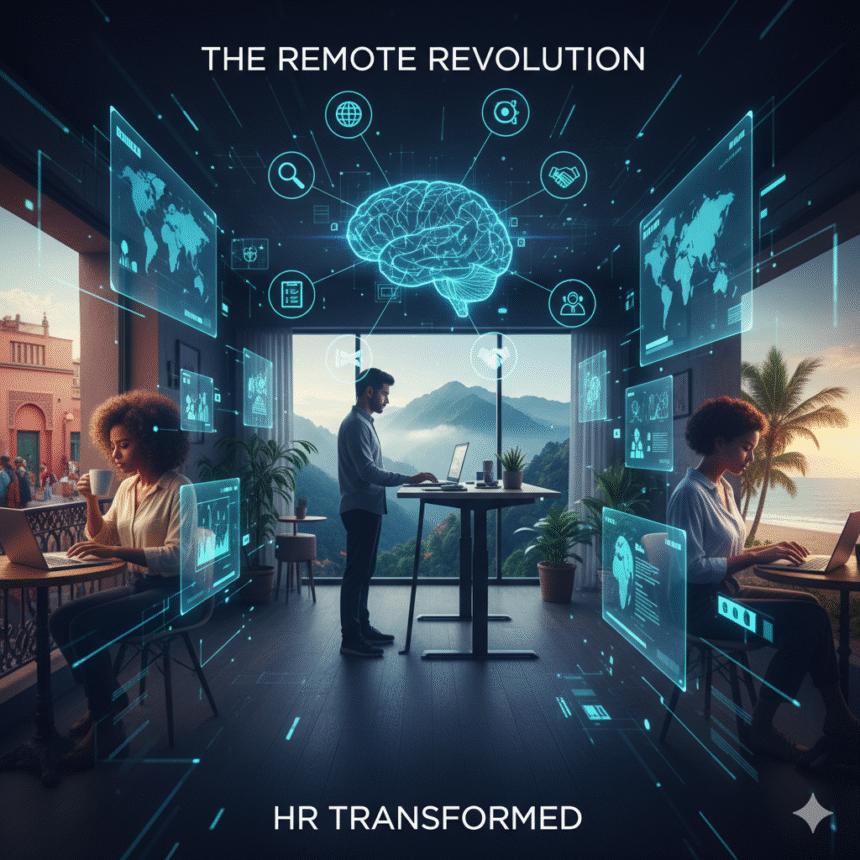The global shift toward remote and hybrid work has fundamentally changed the way organizations operate, placing unprecedented emphasis on the technology that connects people. In this new era, Human Resources has evolved from an administrative function to a strategic enabler, with HR software and digital HR platforms serving as the central nervous system for a distributed workforce. The right HR tech stack is no longer a luxury but a necessity for building a resilient, productive, and engaged team, no matter where they are located. This article explores the essential remote work tools and digital solutions that are empowering HR to make distributed teams thrive, from the foundational systems to the cutting-edge platforms for virtual collaboration and well-being.
The Foundation: Core HR Software and Information Systems
Another foundational piece of HR tech is the Applicant Tracking System (ATS). For organizations tapping into a global talent pool, an ATS is invaluable for streamlining the recruitment and hiring process. Tools like Greenhouse or Lever automate everything from job postings to candidate communication, allowing recruiters to manage a high volume of applications from around the world. These systems ensure a fair and consistent hiring process, providing a seamless experience for candidates who may never set foot in a physical office.
The Onboarding Experience: Virtual Onboarding in a Digital World
In a world where the first day of work might be spent at a kitchen table instead of a cubicle, virtual onboarding has become a critical process for setting new hires up for success. This is where specialized digital HR platforms truly shine. Rather than a day of filling out forms and receiving an office tour, virtual onboarding leverages technology to create a structured, engaging, and personal welcome.
Platforms like Sapling or Enboarder automate the paperwork, distribute welcome materials, and schedule virtual meet-and-greets with team members. They can provide a personalized roadmap for the first 30, 60, and 90 days, integrating training modules, company culture videos, and policy documents into a single, user-friendly portal. The goal is to make the new hire feel connected and supported from day one, fostering a sense of belonging that is crucial for retaining talent in a remote environment. By digitizing this process, HR teams can ensure a consistent and high-quality experience for every new hire, regardless of their location, while saving countless hours on manual administration.
The Collaboration Engine: Essential Remote Work Tools
Communication Platforms: Tools like Slack and Microsoft Teams are the lifeblood of a remote team. They provide real-time messaging, video calls, and a way to organize conversations into specific channels for projects, departments, or even casual social chats. The best practice is to establish clear guidelines on their use, promoting a blend of synchronous and asynchronous communication to respect different time zones and work styles.
Project Management Software: Platforms such as Asana, Trello, and Jira are non-negotiable for remote teams. They provide a visual, centralized place to track tasks, manage workflows, and monitor project progress. This visibility is key to ensuring accountability and alignment, as every team member can see who is doing what, by when, and how their work fits into the larger picture.
Document Collaboration and Storage: Cloud-based solutions like Google Workspace and Microsoft 365 are essential for co-authoring documents, spreadsheets, and presentations in real-time. Paired with secure cloud storage (e.g., Dropbox, OneDrive), these tools ensure that all team members have access to the information they need, when they need it, from any device.
The Human Element: Engagement and Well-being Platforms
Employee Engagement Software: Tools like Culture Amp or Officevibe allow HR to run pulse surveys and collect real-time feedback on morale, job satisfaction, and potential burnout risks. These platforms provide actionable insights that help leaders proactively address issues and build a more responsive and empathetic company culture.
Recognition and Rewards Platforms: HR software for peer-to-peer recognition (e.g., Bonusly, Nectar) helps maintain team cohesion and morale. By allowing colleagues to publicly acknowledge each other’s contributions, these platforms create a culture of appreciation and reinforce positive behaviors.
Mental and Physical Wellness Apps: A growing number of companies are providing access to wellness apps like Calm or Headspace as a standard benefit. These tools help employees manage stress, improve focus, and prioritize their mental health, which is a critical factor in preventing burnout in the remote work environment.
The Future is Data-Driven: Analytics for Strategic HR
The final, and perhaps most powerful, aspect of HR tech is its ability to provide data-driven insights. Digital HR platforms collect a wealth of information on everything from employee turnover rates to training completion metrics. This data allows HR professionals to move beyond reactive problem-solving to proactive strategic planning.
With advanced analytics, HR can identify patterns and predict trends, such as which teams might be at risk for burnout, what skills are missing from the organization, or how to optimize a recruiting funnel for better quality hires. This ability to measure the pulse of the organization from a dashboard is a game-changer for leading a distributed workforce and ensuring the company remains agile and competitive.
Conclusion
The evolution of work-from-anywhere is intrinsically linked to the revolution in HR tech. From the foundational HR software that manages critical data to the specialized remote work tools that facilitate daily tasks, technology is the engine that allows distributed teams to not just survive, but to thrive. The key to success lies in building a cohesive and well-integrated tech stack that addresses every stage of the employee lifecycle—from a seamless virtual onboarding experience to ongoing engagement and well-being. By embracing these digital HR platforms, organizations can unlock a new level of productivity, talent, and resilience, proving that the future of work is not defined by location, but by connection and smart technology
